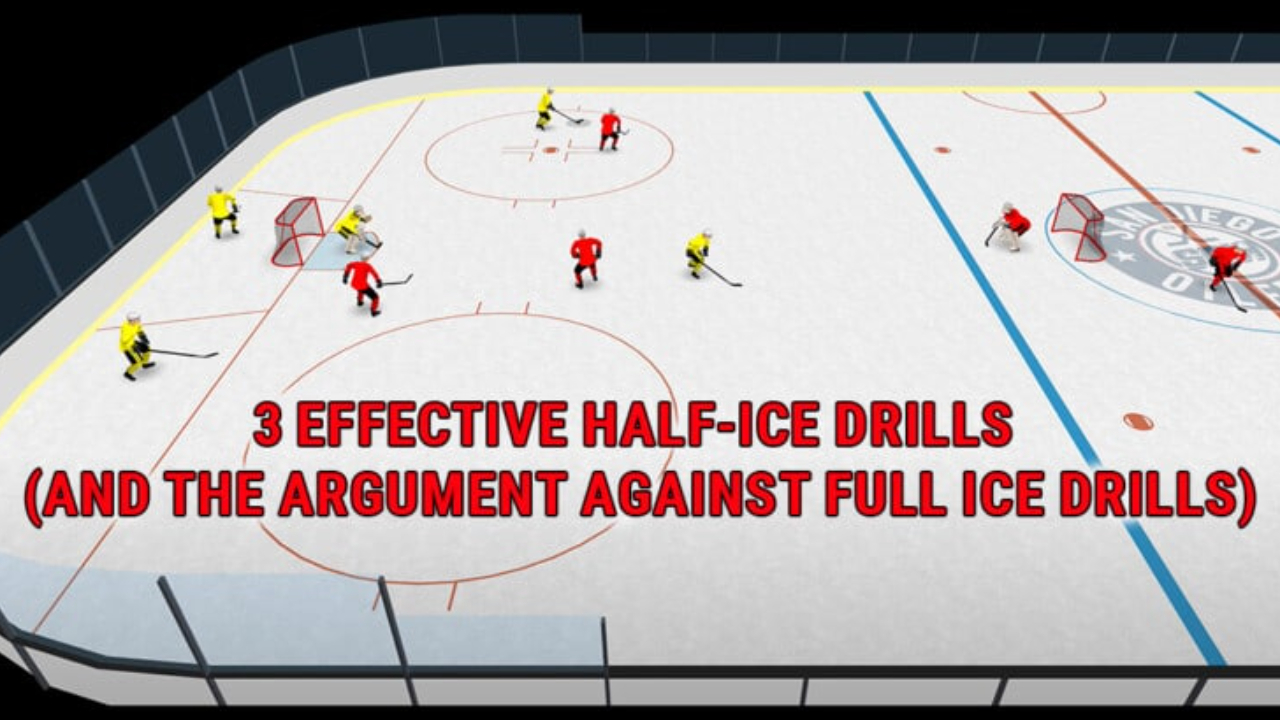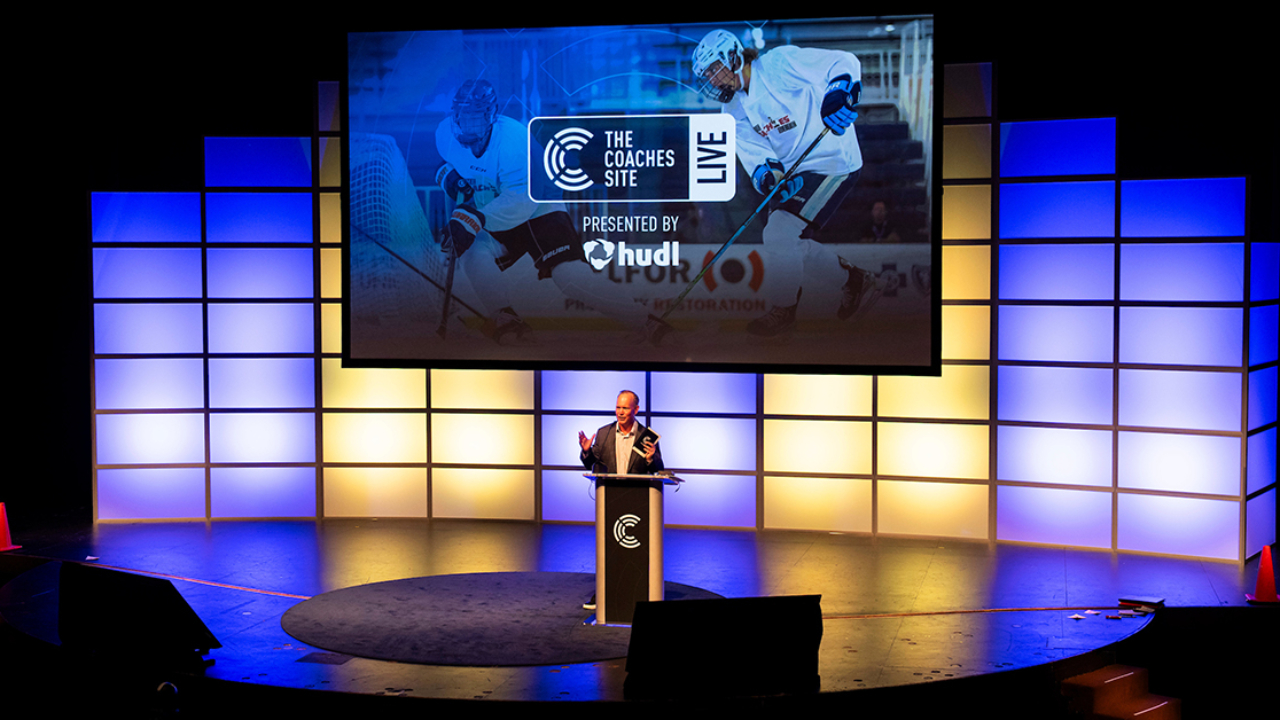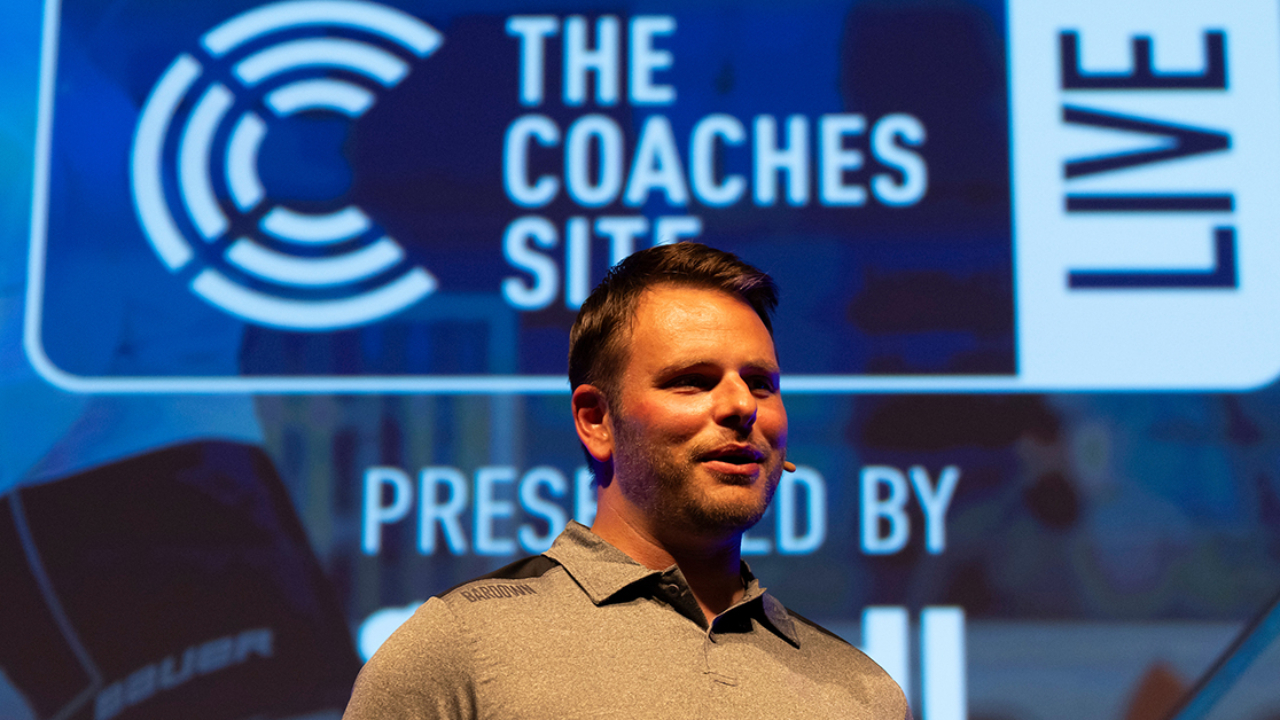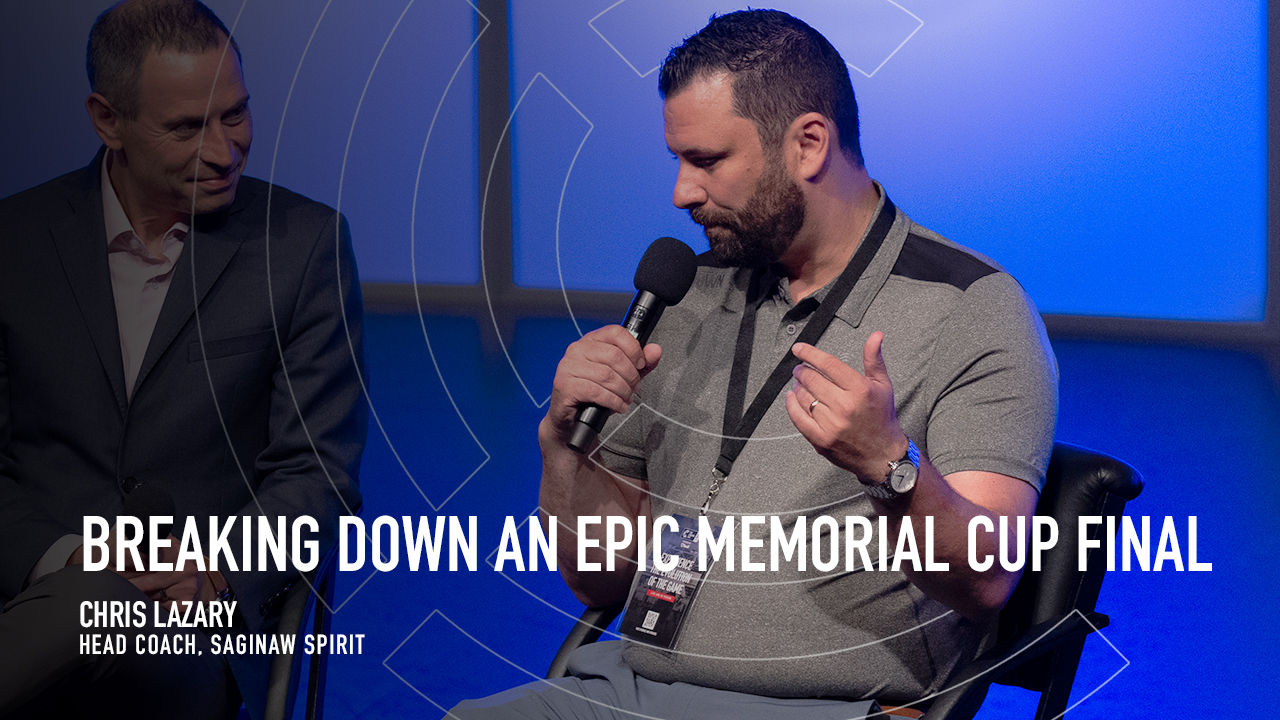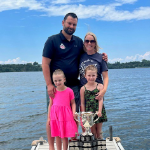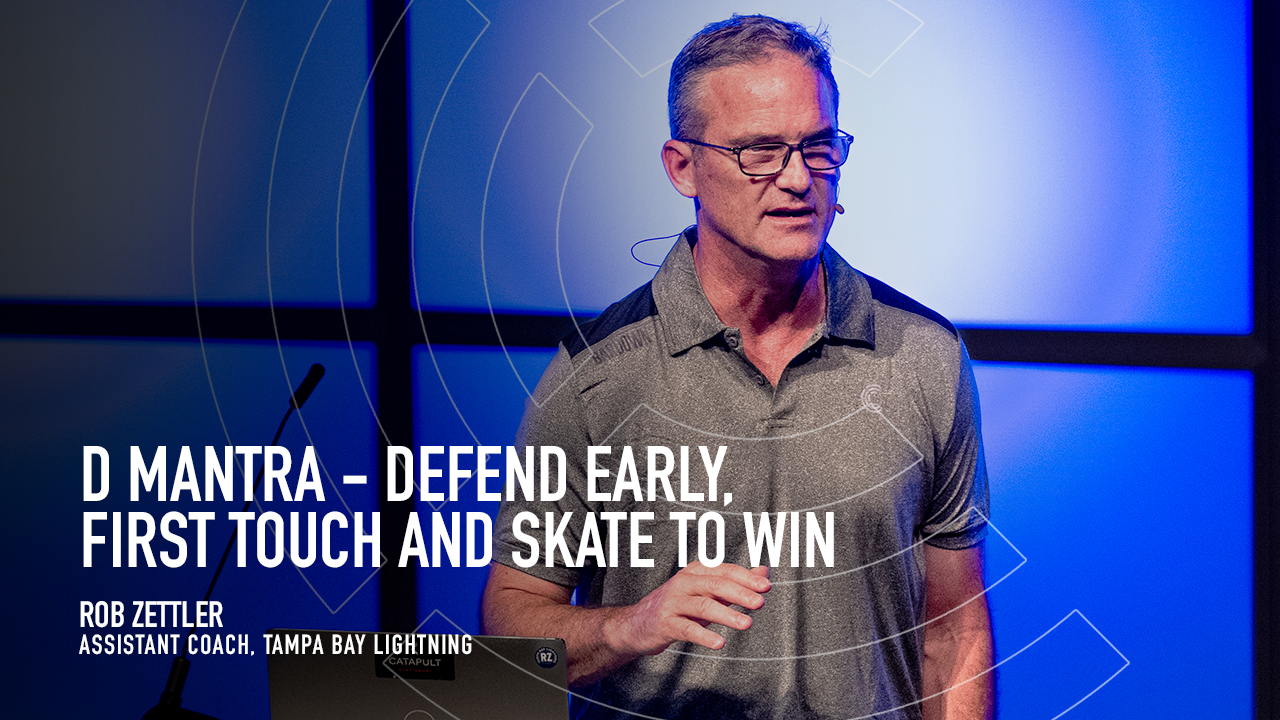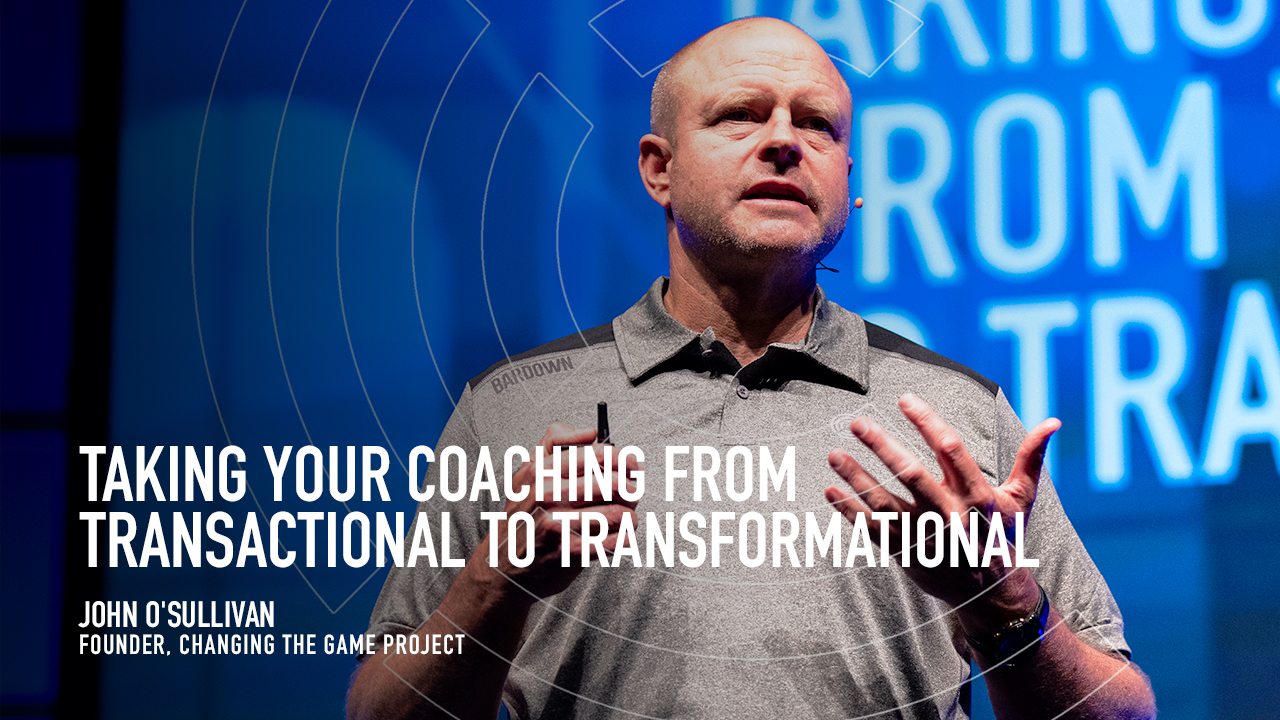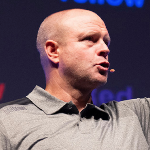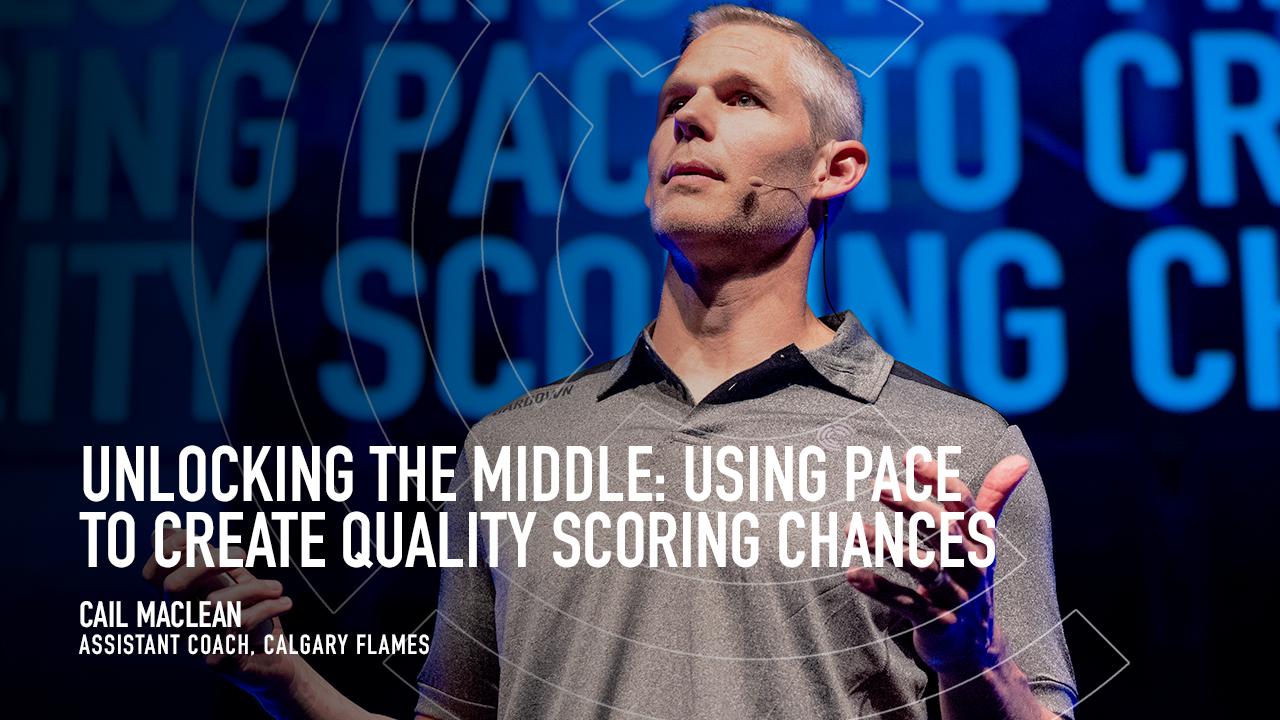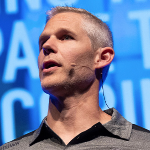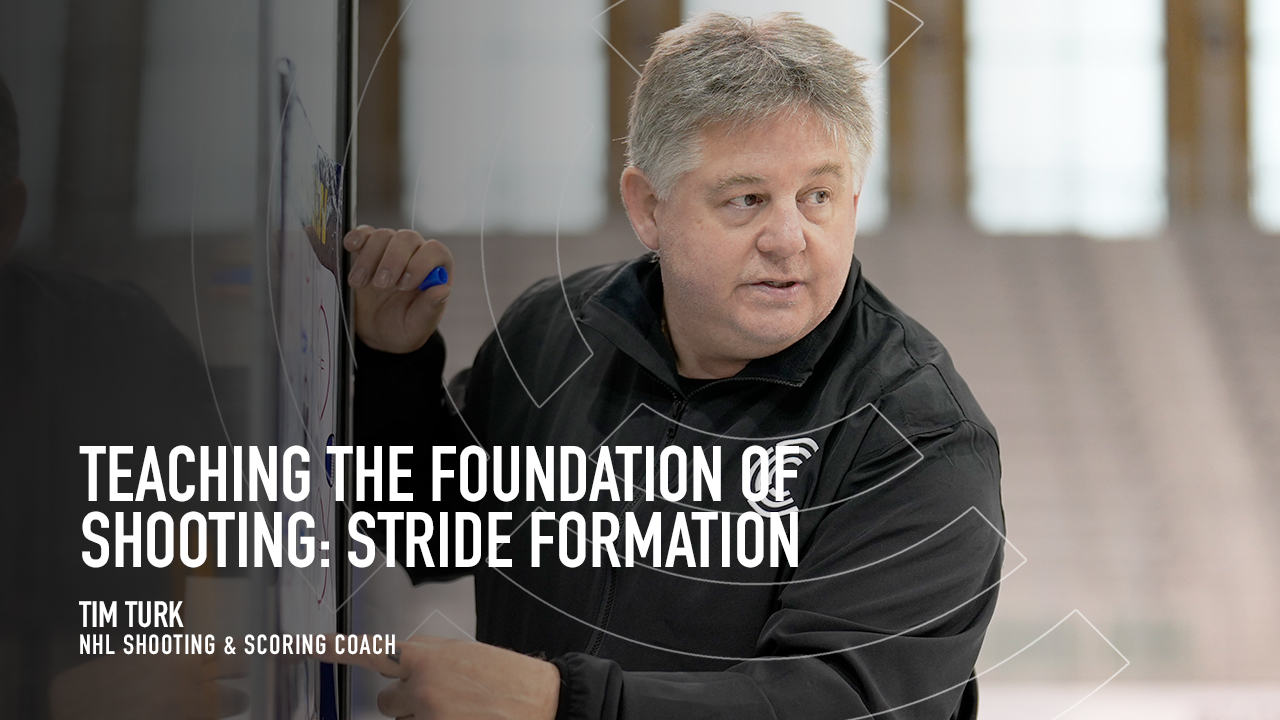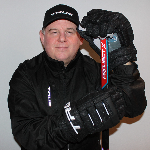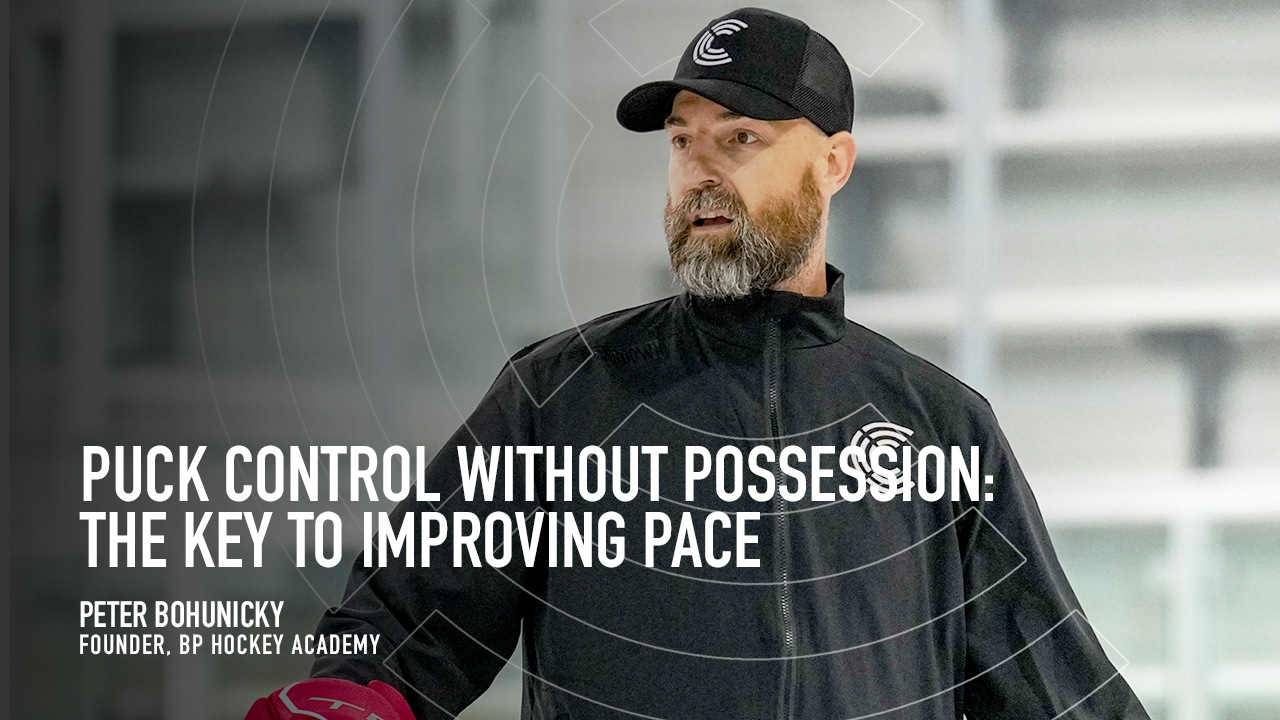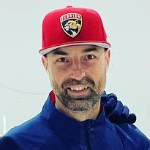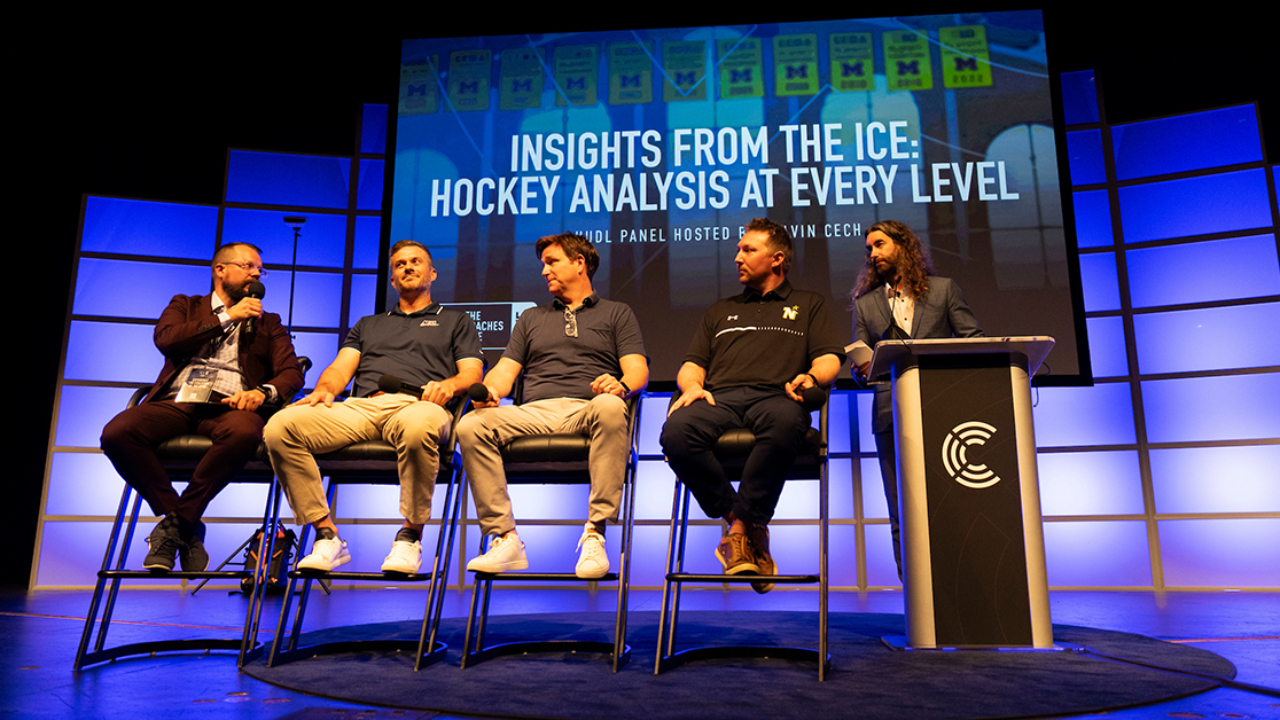
Another day of TCS Live, another day of outstanding on and off-ice presentations.
The three on-ice presenters wowed attendees with drills coaches can start using immediately, while the 10 presenters at the Power Centre had everyone in attendance up and out of their seats mingling and also buried in their notebooks locking in all the learnings.
All TCS Live presentations will be released starting this fall to members of The Coaches Site. Until then, here’s a sample of the goods:
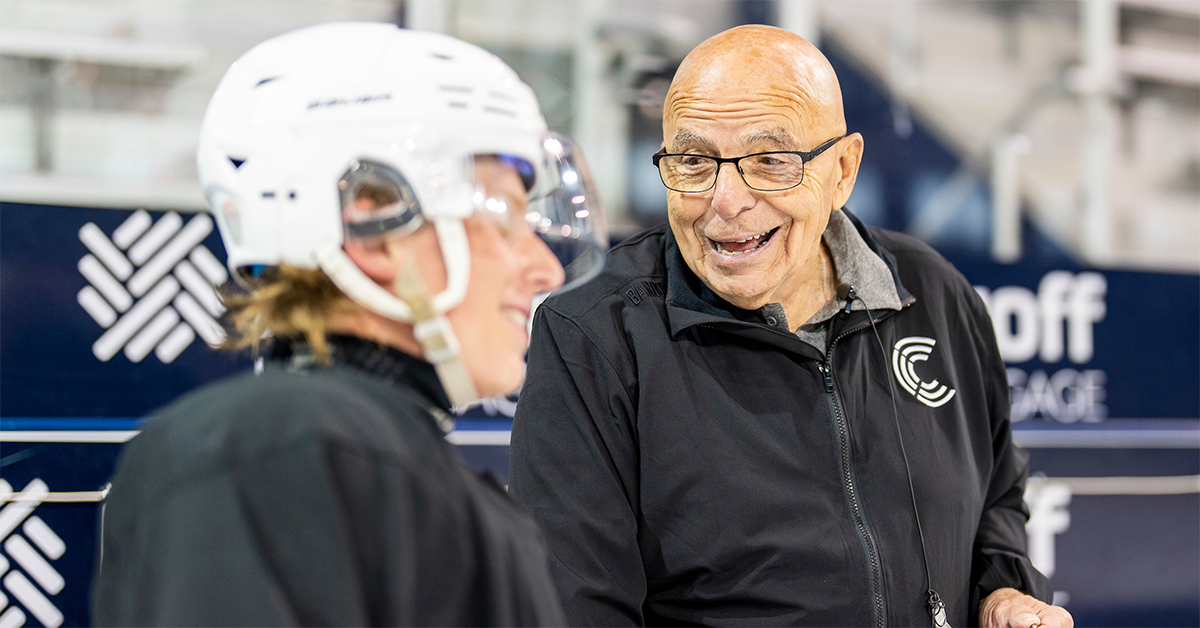
Paul Vincent
Vincent’s core values of always being adaptable and willing to evolve is the key to his success at the highest level of the sport which was on full display at TCS Live.
Vincent's philosophy when constructing a drill comes down to three things. First, evolution. Being open to evolution is crucial to a player’s success in the sport of hockey. Second, Vincent focuses on adapting to the ideas of other sports by applying drills in other sports to the game of hockey. Simple constant passing drills that are featured in sports such as soccer and dodgeball are translated by Vincent to hockey drills. The third focus for Vincent is fundamentals and constantly practicing the areas of the game that are used in every situation on the ice. Through these three areas, Vincent has been able to craft one of the most reputable hockey training programs the sport has ever seen.
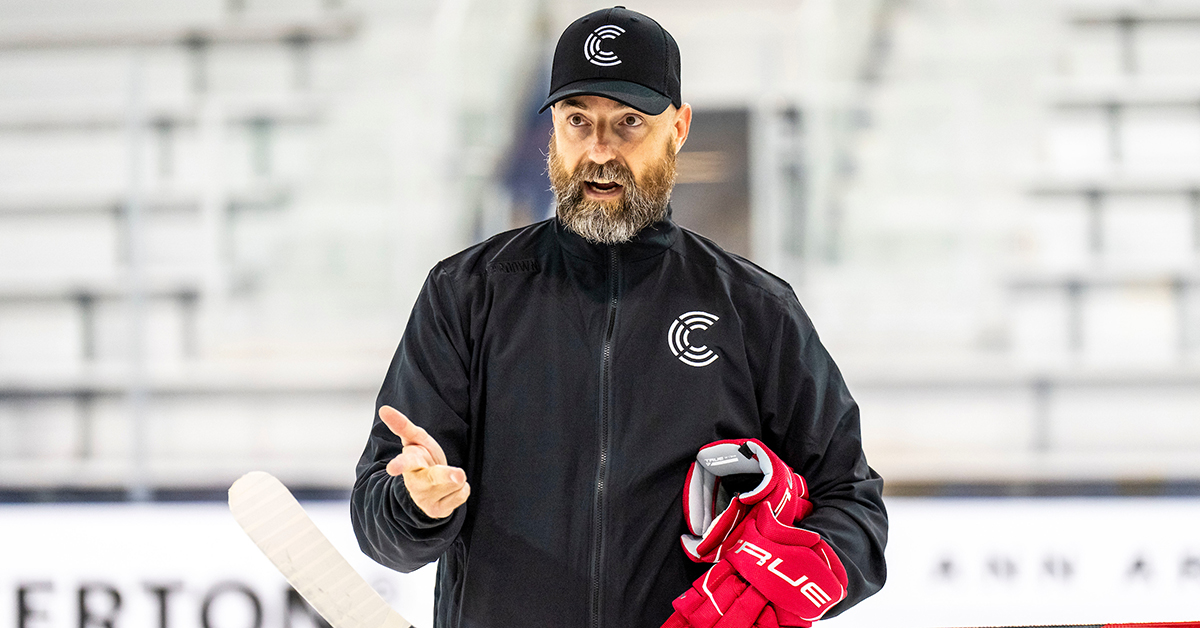
Peter Bohunicky
As the Founder and Head Skills Coach at BP Hockey Academy, Peter Bohunicky has developed a wide range of hockey skills drills that focus on players building speed and power in their shot which he shared at TCS Live.
Bohunicky knows that for players to be successful at the next level they need to be able to build speed not just without, but with the puck on their stick. To build this skill, Bohunicky creates drills that focus on players getting back into their zone and building up speed in their turns going up ice. Another area that Bohunicky has identified as a way to increase a player's speed with the puck, is in how they carry the puck. Bohunicky incorporates drills that force players to only have their top hand on their stick to carry the puck. Having two hands on a stick while stick handling slows down a player’s momentum and doesn’t allow them to maximize their speed in areas of transition.
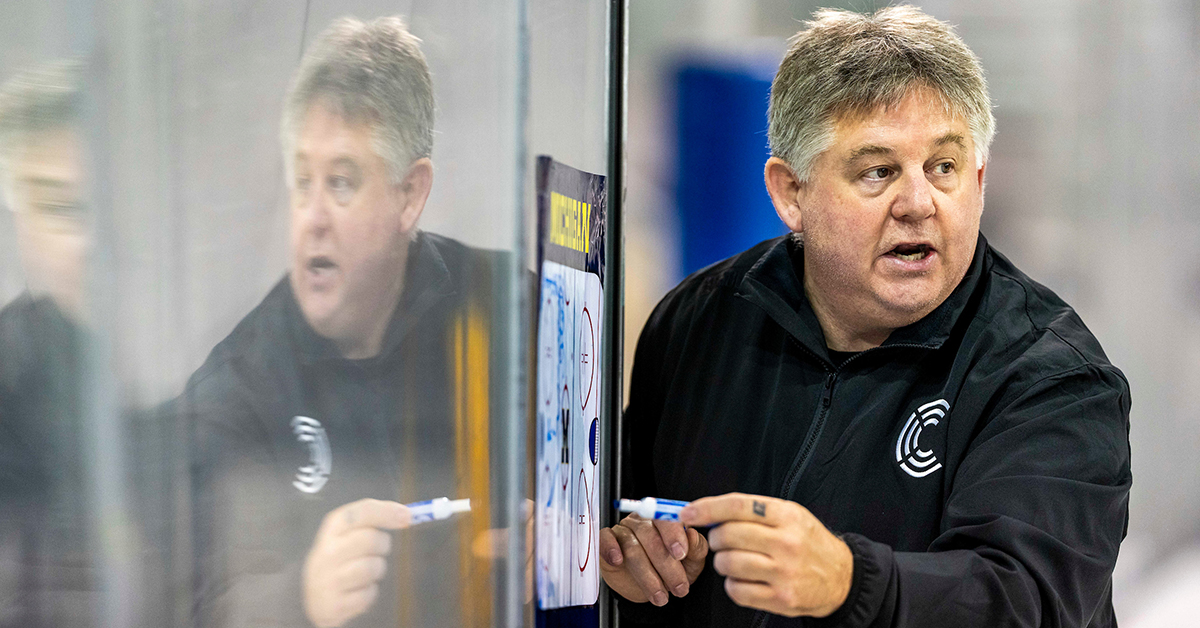
Tim Turk
As the architect for many of the NHL’s best shots, Tim Turk focuses on shooting and scoring which he provided greater insight on at TCS Live.
What makes Turk great is his care and attention to the detail in every player's shot. Something that Turk has found in the best shooters is in their ability to get their hips back when taking a shot. A specific shot that Turk focuses on is shooting while in stride. In most situations a player will have no more than two seconds to get a shot off. Being able to shoot while still in stride is an area of the game that can be taught in practice. When a player shoots in stride, it is important that they generate power by getting low and forcing their hips back. To do this, Turk encourages his players to get their inside leg back behind them in his shooting drills. This movement when shooting results in a player forcing their chest and shoulders to go forward. Getting his players to think about their shooting mechanics is the goal in Turk’s shooting drills.
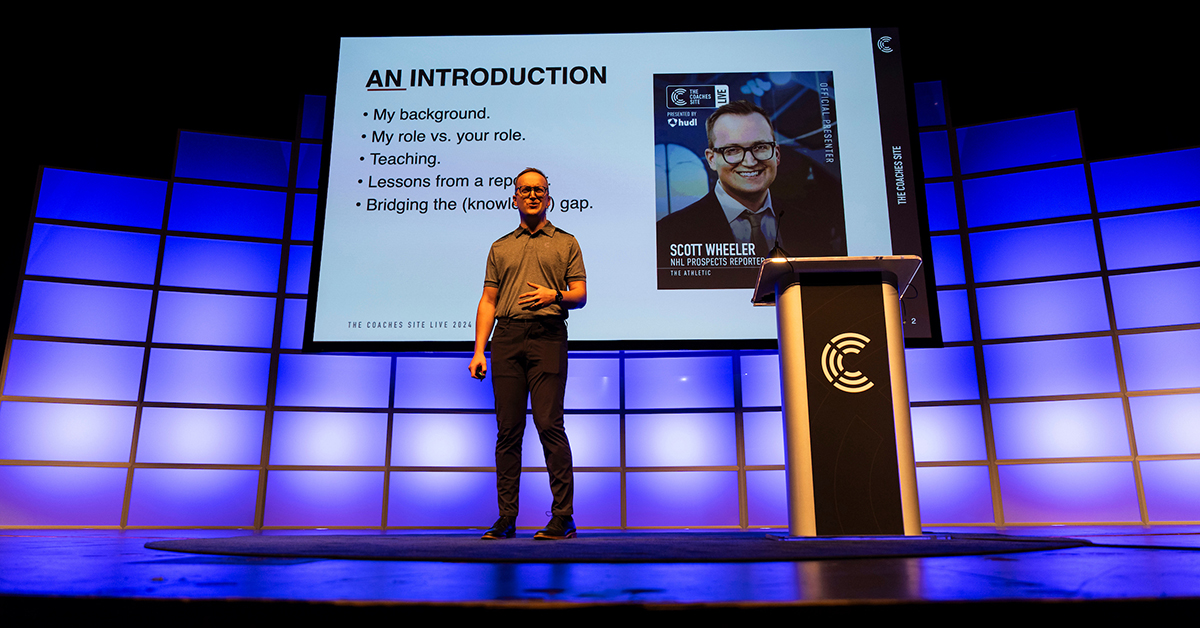
Scott Wheeler
To start off the presentations for day two at the Power Center at TCS Live, Scott Wheeler, one of the NHL’s most notable writers, provided a detailed look into how players should be evaluated by coaches and management.
Wheeler is a strong advocate of the idea that every coach should spend time in player evaluations and scouting, just as every scout should spend time in a coaching role. The goal of scouting is to paint a picture of what a player will look like based on the qualities and traits they possess and how they can use those at the next level. A common mistake that is made in the scouting world is getting hung up on just what a player looks like. A player that Wheeler highlighted as one passed on is Logan Stankoven because of his size. The 47th pick of the 2021 NHL Entry Draft was passed on by many because scouts couldn’t get past Stankoven’s 5 foot 8 stature. In his first season, the 21 year old put up an impressive 14 points in 24 games where he was a big part of the Stars’ Western Conference Final run.
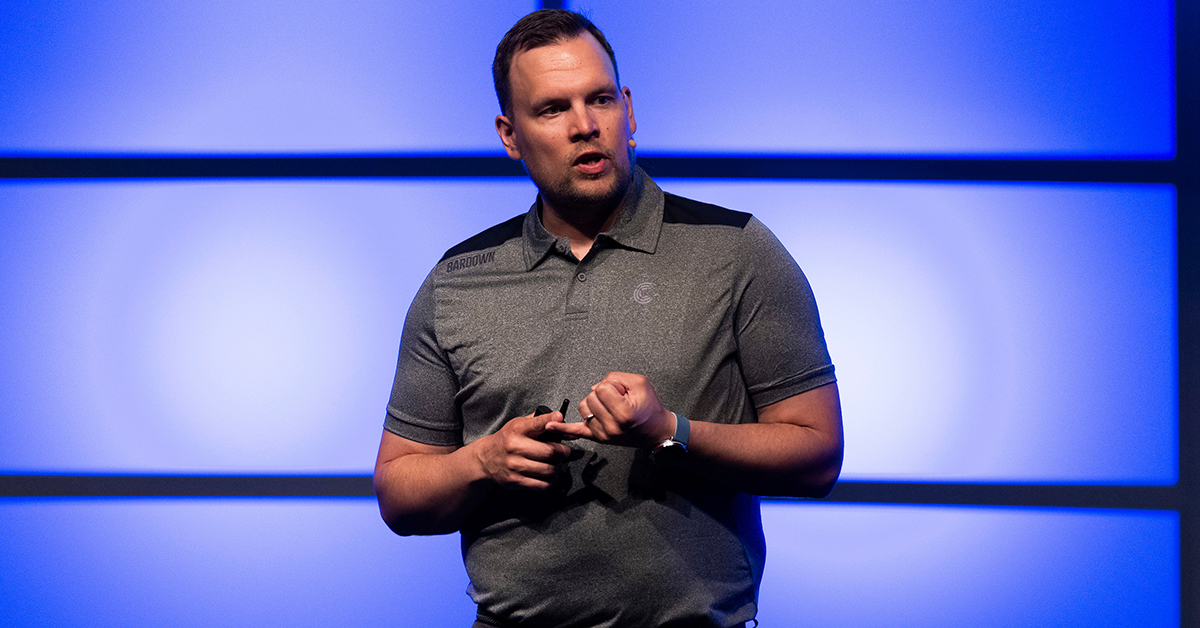
Pyry Lukkarila
Pyry Lukkarila's reason for coaching is to help others learn and get better than he ever was or ever will be. Lukkarila shared his passion for ways coaches can grow in their interactions with their players at TCS Live.
Lukkarila praised the idea of not being repetitive in practice. Through his time evaluating coaching, Lukkarila has noticed that practices that utilize the same drills over and over don’t allow for growth in players through their developmental years. A good practice is one that is challenging and mistakes are a common occurrence. The worst thing a coach can do is to try to avoid mistakes in a practice setting. Practice shouldn’t look perfect because if it does the players know it already and it is time to move on.
The best learning involves constant innovation and new practice material during designated training time. It is also vital that, as a coach, you are clear with your players about what you are doing and why you are doing it in your practice plans. The great teams that are able to develop their players are the ones where their players go beyond just knowing what they are doing but also why they are doing a certain drill or technique.
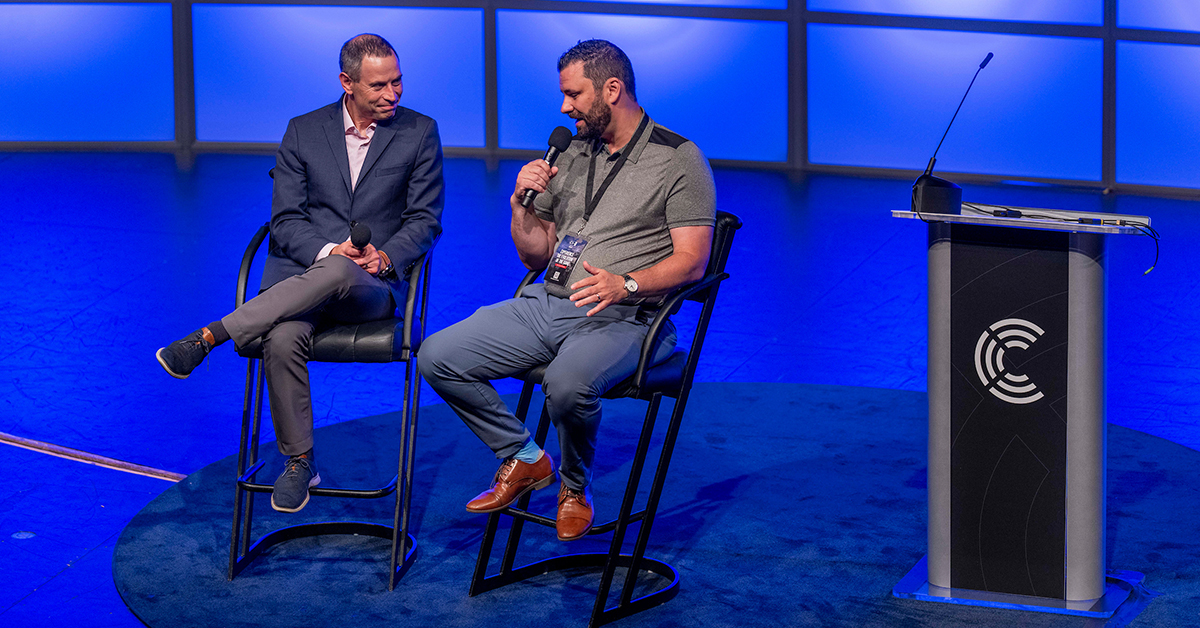
Chris Lazary
There are few accomplishments as prestigious as winning a Memorial Cup Championship. At TCS Live, Head Coach of the Saginaw Spirit, Chris Lazary, sat down with John Morosi to talk about Saginaw’s remarkable 2024 Memorial Cup Championship against the London Knights.
Before capturing the 2024 Memorial Cup Championship, things were not smooth sailing for Lazary and the Saginaw Spirit. After a disappointing start to the season Lazary felt that he was quickly losing his job as the Spirit’s Head Coach. However, rather than letting frustration get the best of himself and his team, Lazary and the Spirit chose to embrace the struggle and come together as one to work through their mishaves. Taking the time to open up to his players and share emotions proved to be a turning point in the Spirit's season as the team would experience tremendous success down the stretch of the season, earning the opportunity to compete for a Memorial Cup.
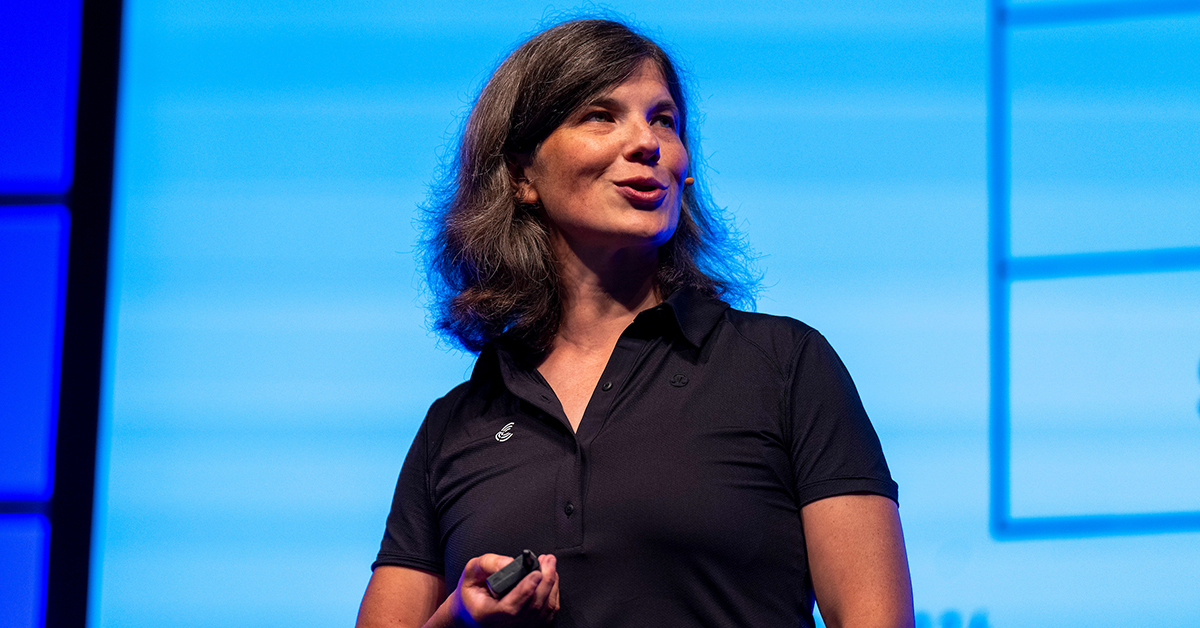
Kim McCullough
As a proud advocate for women’s hockey, Kim McCullough is ecstatic that physical play is now being incorporated into the women’s game. With this new addition, McCullough gave an in-depth presentation at TCS Live on ways to teach the physicality of hockey.
McCullough expressed using physicality is a big advantage in hockey, but it is often not a focal point in many practices. McCullough explained that getting prepared for body checking is a fundamental skill that needs to be more well taught throughout youth hockey. McCullough breaks down body checking into four areas of practice. The first being to own your ice. As a coach it is of value to tell your players to not accept being on the outside ice. Getting low and winning body position to get to the inside during a battle is something that coaches should instill in their teaching of players.

Hudl Analytics Panel
Video analyst is a staple to every hockey program in the world and it has come a long way in how it is used and how it is presented. The Coaches Site's Kevin Cech hosted a panel at TCS Live to discuss more about the insights in hockey analysis at all levels of the game.
Having access to the video analyst in this day and age of hockey is critical in the development of a player. However, just as important is the way that coaches feed this information to their players. As a coach, it is important that video sessions are not something that players leave discouraged from. Every coach is different in their positive and negative clip ratio but having a situation where film is a negative part of their day that will impact their confidence and their play. Hard coaching can still exist, but teaching players through video in a supportive manner is the most effective way to get the most out of players. The key in teaching through video analysis is creating a level of understatement while walking players through different situations and how to improve their game going forward.
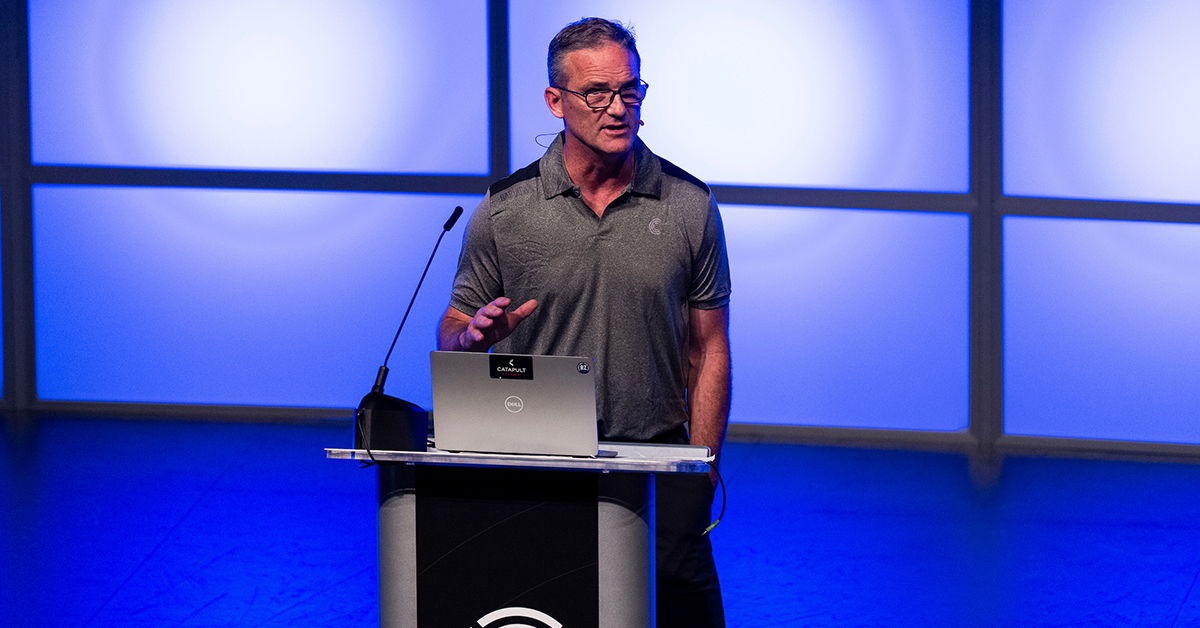
Rob Zettler
With over 20 years of playing and coaching experience in the National Hockey League, few understand the defensive zone as well as Rob Zettlet. In his film break-down presentation at TCS Live Zettler broke down the small details that lead to big plays as a defenceman.
Currently as an Assistant Coach for the Tampa Bay Lightning, Zettler has set in place a D-Mantra for his blueline. The three areas that Zettler focuses on are defending early, getting the first touch, and skating to win. Zettler wants his defenceman to be active and maintain the zone when they can. To do this, Zettler preaches sealing the walls of the offensive zone with the defenseman’s stick to the interior of the ice to keep offensive pressure on. However, when the D-men read that the opposition has full control of the puck and can attack with speed out of their zone, that is when Zettler teaches a defensive technique known as surfing. The goal of surfing is to break up plays early in the neutral zone and allow supporting teammates to help retrieve loose pucks and get back on the attack quickly. Surfing entails the off side D-man to come across the ice and cut off the play. The key to being successful in this style is all about timing and reading the play correctly. Zettler wants his defense to be able to attack moving forward and laterally, not always backwards. By sweeping across the ice, his defenseman can get their momentum moving forward to break up plays faster before they evolve into rush chances against. Being patient and having a good gap is critical to the success of this type of style.
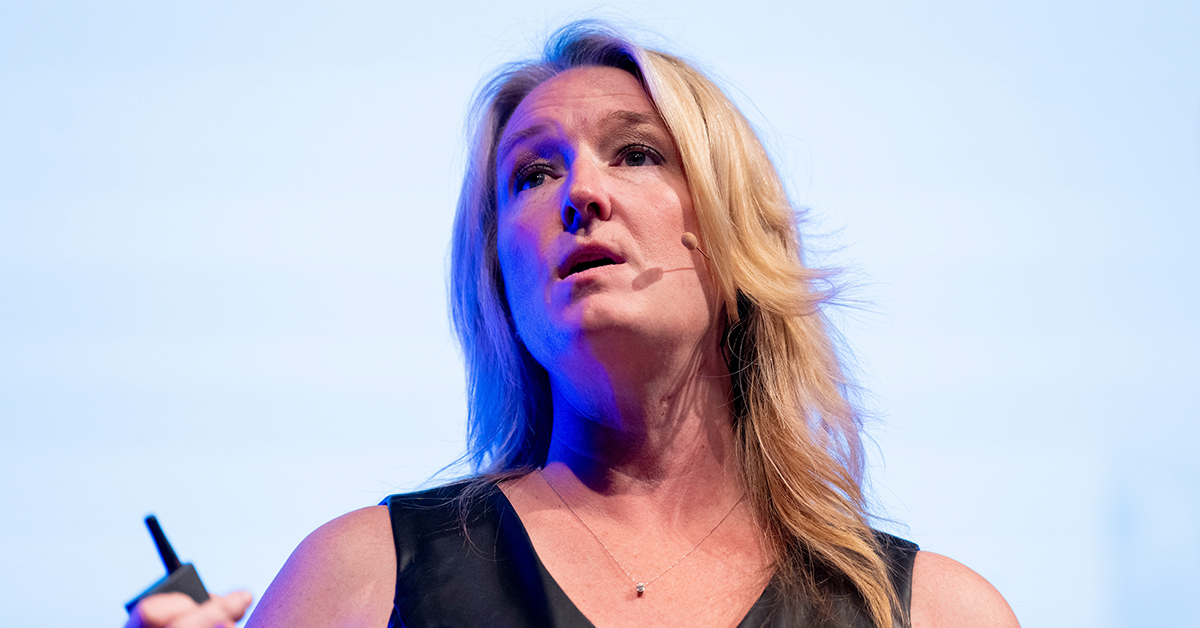
Larissa Mills
As a Cognitive Behavioral Sport Specialist, Larissa Mills knows all about the negative effects social media can have on player performance as she shared at TCS Live.
In order for athletes to master Hockey IQ, they need to master Mental IQ first and their phones. Mills shared many startling facts such as that athletes are touching their phone 176 times a day. From those 176 touches athletes will then spend 200 hours a month on their phones and only 20 hours on hockey training that is 80 hours. Phones are also causing athletes to stay up later than all children before them with 84% of kids are addicted to their phones. When working with athletics and their social media addiction nearly 75% of athletes come to Mills with no confidence or mental skills. What all this data leads to is the conclusion that phones are having a negative impact on player performance. Brains are working 35% less than previously because of phones which is impacting decision making mightily and in hockey decision making is the core fundamental of the sport.
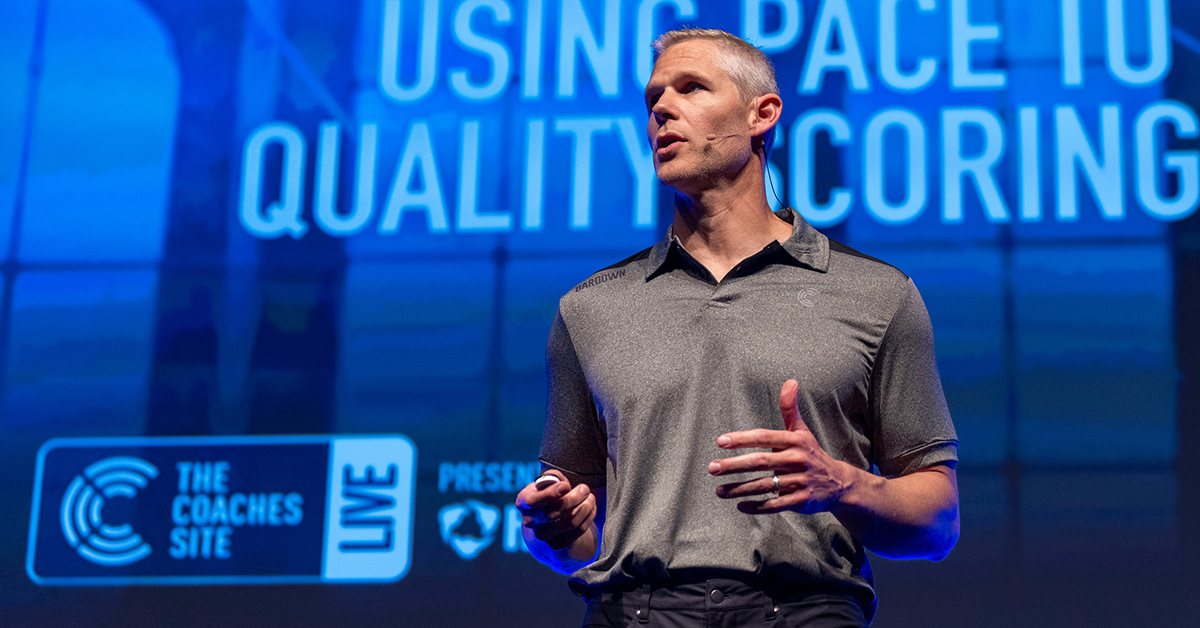
Cail MacLean
Between his 11 year playing career and continuous coach career, now Calgray Flames Assistant Coach Cail MacLean is a specialist when it comes to coaching his players on how to unlock the middle of the ice as he presented at TCS Live.
The middle of the ice is called the hard ice for a reason. 80% of an NHL game is played outside dots. That is because quality chances are the best predictor of scoring with high danger chances occurring close to the net in the slot line. This is why it is important to find ways to get to the middle of the ice to create scoring chances. To accomplish this MacLean preaches one important thing and that is being predictable. Making simple predictable plays to get to the inside of the ice allows supporting teammates to best align themselves and get into positions where they can attack the center of the ice. Timing plays is important to be able to attack with pace and be able to attack the inside and create scoring chances. A great way to attack according to MacLean is as a player to use speed to pull the defenceman to the middle and then be able to take the wide length to the net.
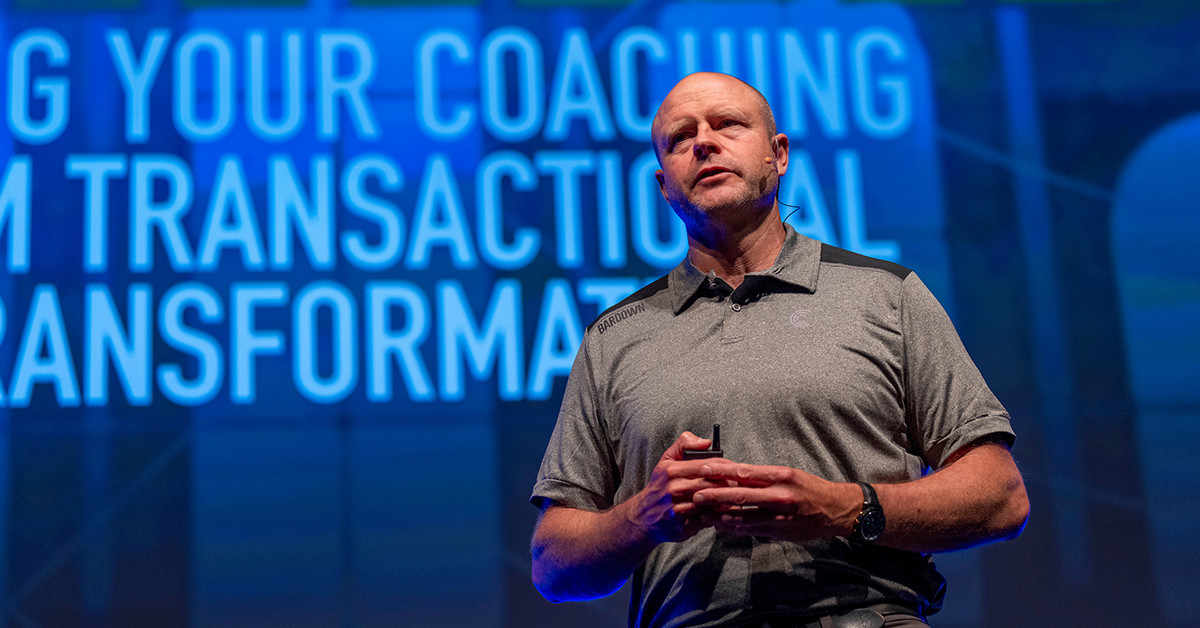
John O’Sullivan
As the founder of the Changing the Game project, John O’Sullivan is constantly preaching ways that those involved in youth sport can maintain a level of happiness and fun with the children who play. At TCS Live O’Sullivan dove in depper on the areas in hockey that remain constant and needs to be emphasized more in youth sport.
In hockey, coaches are always looking at what is changing in the future. However, not enough emphasis is put on the areas of the game that aren’t changing. According to O’Sullivan there are three things that remain the same in the sport of hockey. The first reason why kids play hockey is because they want to have fun. Fun for kids is having the opportunity to try their best, getting to play, and having a team dynamic. When surveying kids to define fun, winning was the number 48 most popular answer. At a younger age especially it is important to understand that kids play hockey to be a part of something bigger than themselves rather than what the end result is. The second thing that remains the same in hockey is what kids want from coaches. The secret to what kids want out of coaches is not always the Xs and Os or the inner workers of the game of hockey, but rather kids desire a real connection to their coaches.

